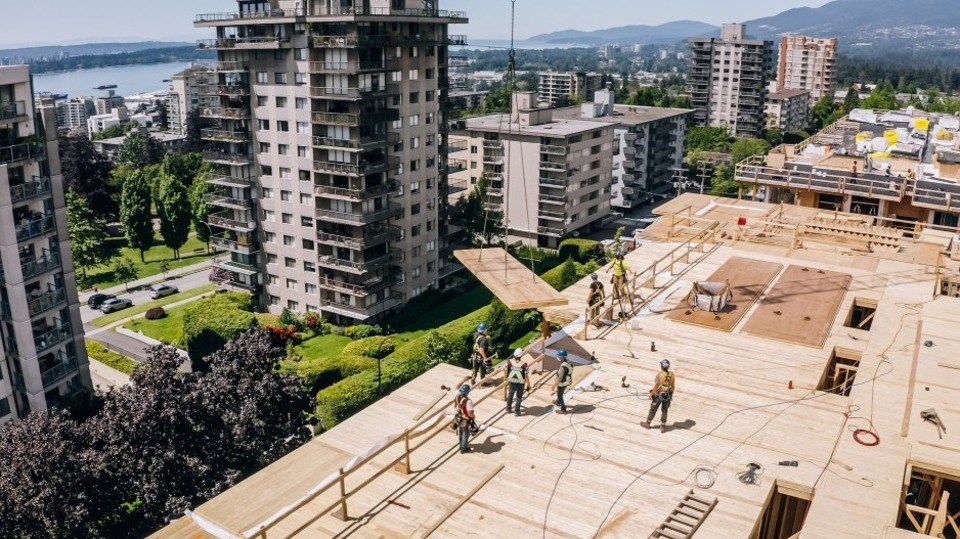A greener future is taking root in B.C. with the province updating its building code to encourage more mass timber construction.
The latest updates, announced April 10, allow encapsulated mass-timber construction (EMTC) buildings to reach as high as 18 storeys for residential and office buildings, up from the previous limit of 12 storeys.
EMTC is a type of construction that has achieved a certain degree of fire safety thanks to the mass timber components being encapsulated in fire resistant materials.
In addition to increasing building height, encapsulated mass timber can now be used for a greater variety of building types such as schools, libraries and care facilities as well as retail, light-and-medium industrial buildings.
“These expanded provisions for mass timber will enhance the innovation already happening in the province, offering designers, developers and municipalities the opportunity to pursue high-performance, low-carbon wood construction in a wider range of buildings,” Rick Jeffrey, president and CEO of the 91原创 Wood Council, said in a statement.
“The 18-storey EMTC provisions have tremendous potential to strengthen the B.C. economy by using B.C. forest products and workers to build much-needed affordable housing.”
B.C. is leading the nation in mass timber construction and is home to 42.6 per cent of the 832 mass-timber projects in various stages of planning or development across Canada.
This translates to 355 such projects completed, under construction or planned from 2007 through to the first three months of 2024, according to a federal government map that tracks mass-timber projects.
The announcement follows the approval of a . New buildings in areas that would typically allow for eight to 11 storeys can qualify for two additional storeys, and buildings in areas that allow for 12 or more storeys can qualify for three additional storeys.
“You have to make the way for change, you have to write the codes to adopt change and then there is always a lag between getting the industry up to speed as the demand increases,” Grant Newfield, a professional engineer and principal at Read Jones Christoffersen Ltd. (RJC Engineers), said in .
“We’re in that stage of an evolving [industry], but it’s still going to be a five-year period to see it get to a more mature level.”
The code changes will also allow for more exposure of mass timber in buildings, based on a building’s height and use, such as residential buildings with as many as eight storeys, according to the B.C. government.
“The BC Building Code changes for mass timber were developed by a national joint task group co-chaired by B.C. and Quebec. The code changes were reviewed by an expert technical advisory group that included representatives from multiple provinces, the fire services community, fire safety engineers, technical building code experts, regulators and industry,” said the announcement.
Quebec has the second-highest number of mass timber projects at 221, according to the federal government.
B.C.’s code changes will be submitted to the national code system so that they can be considered for Canada’s national building code.




